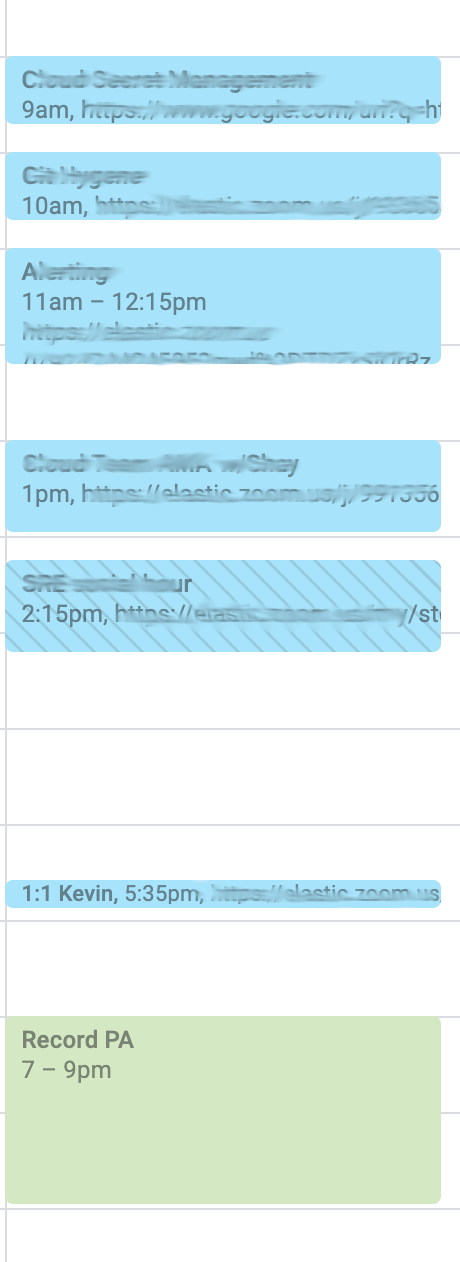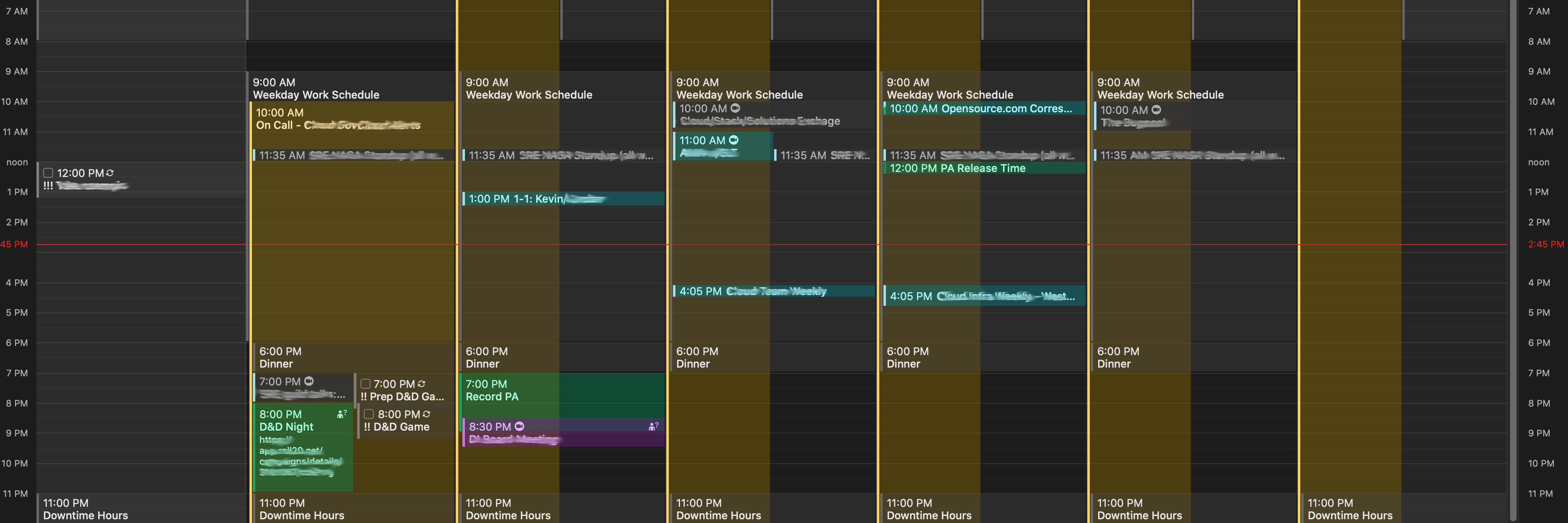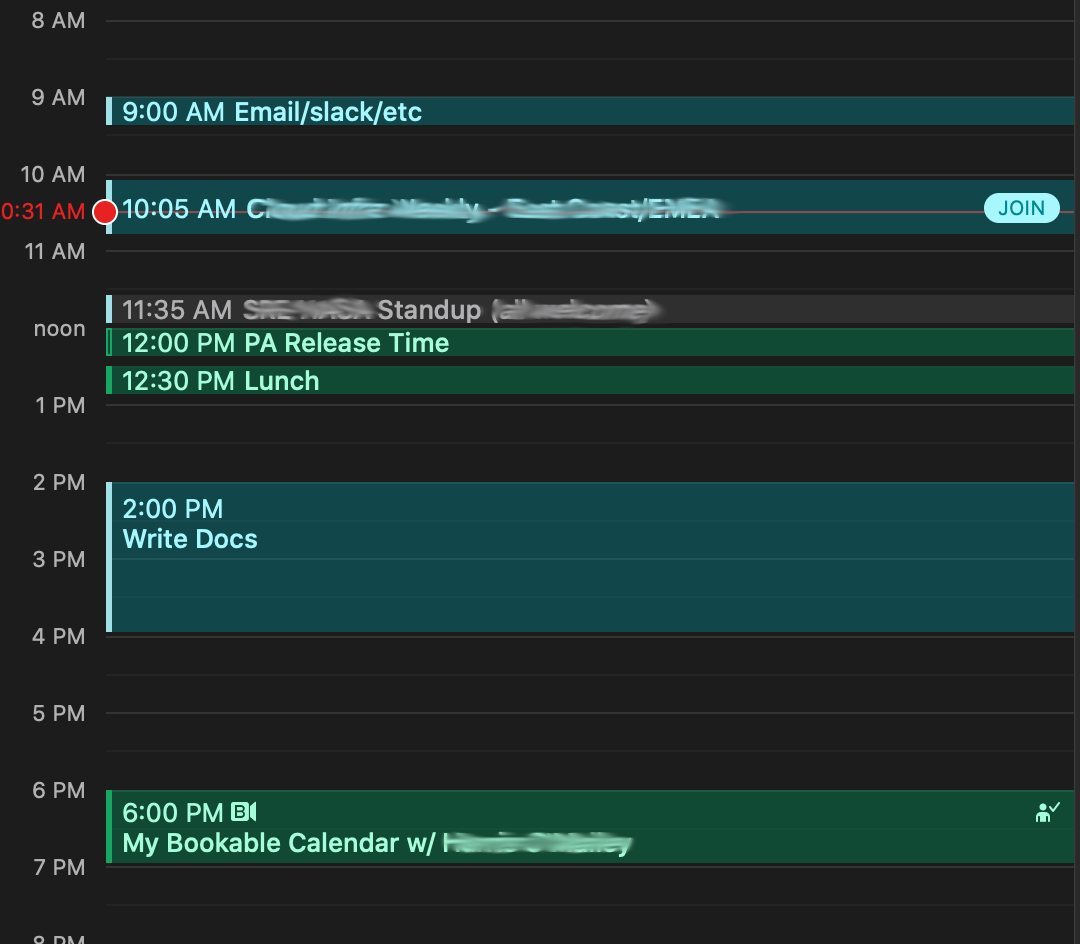5.0 KiB
Gain control of your calendar with this simple strategy
Time boxing is a time management strategy that helps protect your time
so you can focus on the task at hand.

In prior years, this annual series covered individual apps. This year, we are looking at all-in-one solutions in addition to strategies to help in 2021. Welcome to day 3 of 21 Days of Productivity in 2021.
Before we had calendars on our computers, we often had to do a dance around scheduling a meeting. A time that was good for Alice and Bob might not be suitable for Carol and Dave, so there was a lot of talking about when the meeting could be held. When electronic calendars became generally available, it was a revolution. Alice could check to see when Bob, Carol, Dave, and a meeting room were open, and send out an invitation asking for all of them to attend.
And, if you're looking for an open source calendar client, check these alternatives out.
A typical day (Kevin Sonney, CC BY-SA 4.0)
However, this led to problems where the only time available was when Carol, who is on the West Coast, is at lunch. Or Bob planned to use that big empty space on his calendar for writing a new function, but now has a meeting in the middle of it.
If Bob wants to avoid this, he creates an appointment with himself on his calendar to "Write Code," and Alice sees that block of time is not available.
This strategy is called time boxing and is not only useful for preventing that meeting from being scheduled at a given time, but for giving a person the time to focus on a specific task. That task might be responding to email, writing code, or taking a break.
An on-call week (Kevin Sonney, CC BY-SA 4.0)
Time boxing is very good for working on long projects with a deadline. With dedicated time set aside, it is easier to focus on individual steps and track progress. It also allows a person to say, "this is when I will be working on X," in a status update email or meeting.
As discussed yesterday, assigning dedicated times to read and respond to email helps reduce stress and set expectations for when people might receive a response. Users can schedule time to work on more complex issues that may be brought up in email as well.
Taking breaks is one of the things I, at least, am really bad at. After two hours of working on a problem, I know that my mind is going to be stuck in that space. For me, getting up and stepping away from my desk for a short while helps me clear my mind and focus on the next thing. In my case, this is very important after a meeting since what I may be working on next is not very likely to be directly related to the meeting I just attended.
I also block out time to eat lunch since I, like many people in technology, will get wrapped up in something and forget to eat lunch until late in the day or not have a meal at all, and just snack here and there.
Blocked out time (Kevin Sonney, CC BY-SA 4.0)
How do we deal with the person who schedules something in the middle of a block? There are a couple of ways. The easiest is to request a new time, just like any other meeting with a conflicting time. Sometimes, though, it can't be moved, and the meetings with myself must be moved around to accommodate.
Time boxing is an effective strategy for protecting time to work on specific things, take breaks, or process other tasks, and one I regularly use for both work and my hobbies (like writing articles for OpenSource.com 😄).
Need to keep your schedule straight? Learn how to do it using open source with these free...
via: https://opensource.com/article/21/1/calendar-time-boxing
作者:Kevin Sonney 选题:lujun9972 译者:译者ID 校对:校对者ID


